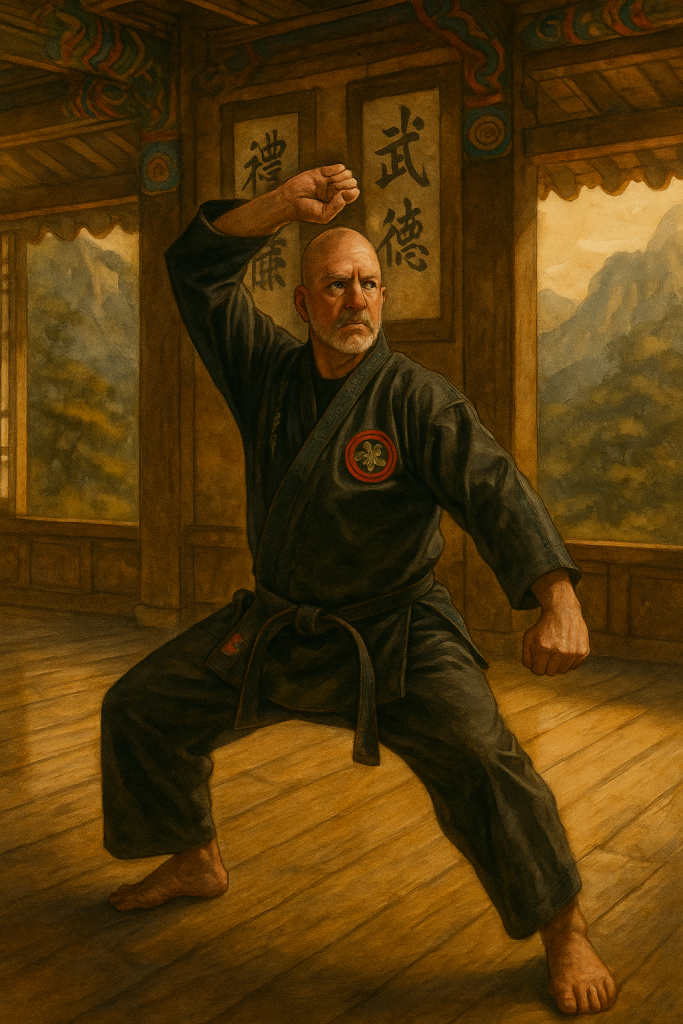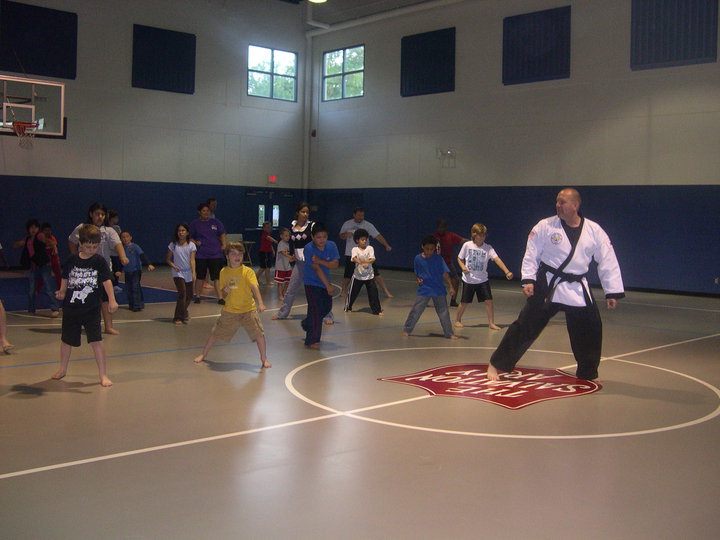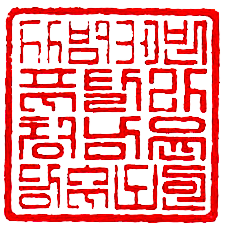When I left South Korea and returned to the United States in 1986, I immediately began looking for schools to continue my Tang Soo Do training. Back then there were hardly any dojo or dojang regardless of the style, but when I visited the few, I noticed a huge difference between the focus stateside and the focus under Master Yun in Korea.
The schools I came across were adding more and more to their curriculum, such as more forms, weapons, and claiming it was part of Tang Soo Do. They focused more on sport than anything else, and there were at least 10 grades from white belt to black belt, often it was more.
For a long time, I wondered about this and was even tempted to add to what I was taught and passed on to my students. I began to think back on the time training under Master Yun in South Korea. I would ask him on occasion “Will we learn this kick? Will we learn this weapon?” and he would always smile and say no. I just figured it was not part of Tang Soo Do or that it would be taught later, but I eventually realized that it was more than that.
Go Deep

Master Yun focused on mastering the basics and hyung, not on learning more and more. He was concerned with going deep, and learning the fine points of each stance, technique, and hyung, then focusing on applying them with different opponents in sparring and one step sparring.
He tested the strength of our front stance by climbing onto our back leg, ensuring the knee was locked, strike our arms while performing blocks to test how solid they were, and strike our knuckles with a wooden block to build strong fists.
It wasn’t about more and more, it was about fully mastering what we were taught.
I have read that some of the world Karate competitors may train in styles that have as many as 20 kata, but they only choose maybe three or four to focus on and truly master for competition. They go deep on every move, then slowly piece it all together, repeating it over and over until they could do it blindfolded. They make them theirs and fully master them.
Going deep in your training also brings about a different type of mastery. Mastery over yourself. Constantly repeating the same movement or hyung over and over trains your mind to focus, your spirit to strengthen and stand firm, refusing to quit, and mastery over your emotions when you get frustrated over making the same mistake again and again until you finally get it right. In my opinion that is the true benefit of martial arts and karate training, followed by self-defense skill.
The Traditional Tang Soo Do taught by Master Yun and that I have continued to pass on has only three belts from white to black. The belt system goes white, blue, red, black, with no stripes or hash marks. The student is taught to focus on mastery of what they are being taught, not earning their next stripe or belt color. They stay at each belt for a longer period of time.
I used to hold belt tests and gradings early on, but to take it one step further, I paid close attention to each student while in class. I watched their dedication, how they interacted with their classmates, and their skill level in all they do. When I was satisfied, they mastered what I was teaching them, I awarded them their belt at the end of class in front of all of the students. No stuffy grading with a board of masters, no audience, just the student and the result of their effort.

This practice stopped the students in the kids’ classes constantly asking, “When can I test?” and because there was no grading or testing fee, the parents didn’t feel that their child was entitled to receive their next belt just because they paid a testing fee.
I have never taught martial arts to make money, and most of the time I have taught for free. It has allowed me to stick to my traditional roots without feeling like I have to compromise because the students or parents are spending so much a month or a testing fee.
It allows me to go deep and focus on training warriors in life, capable of handling what life throws at them and overcoming it, and at the deep end is where I will stay.

